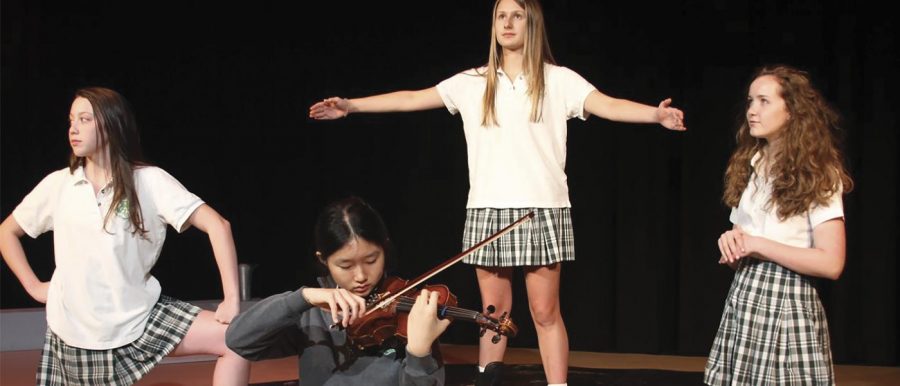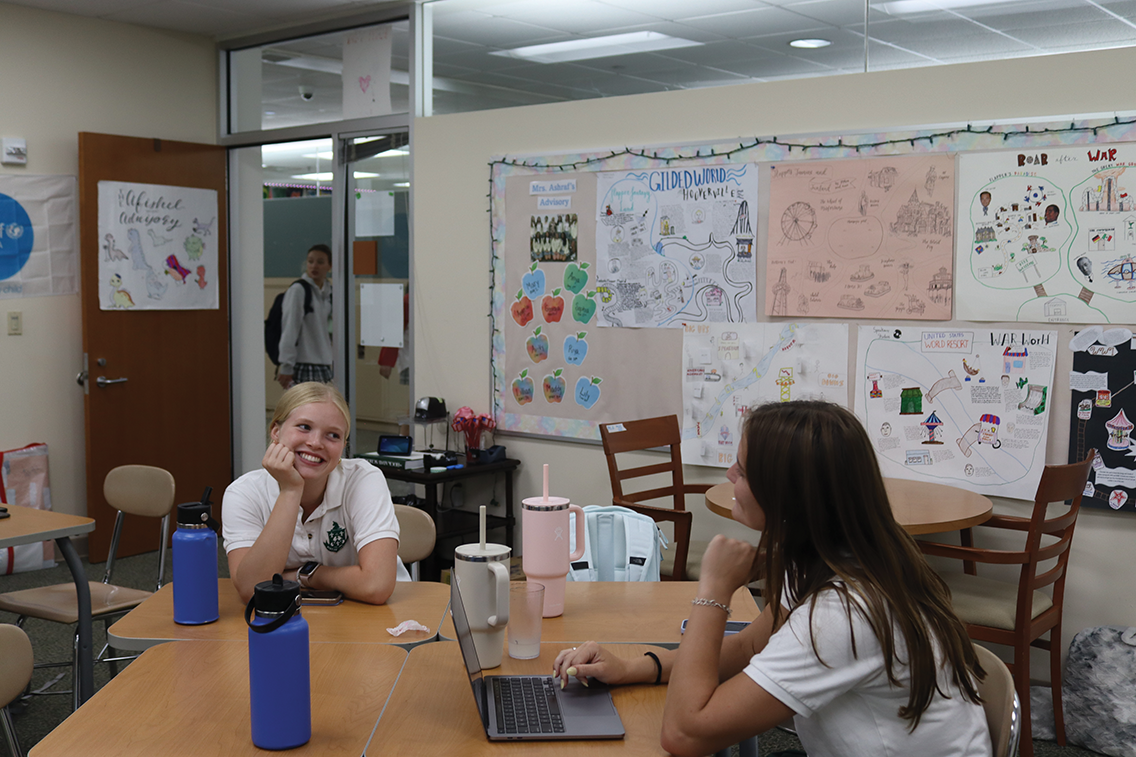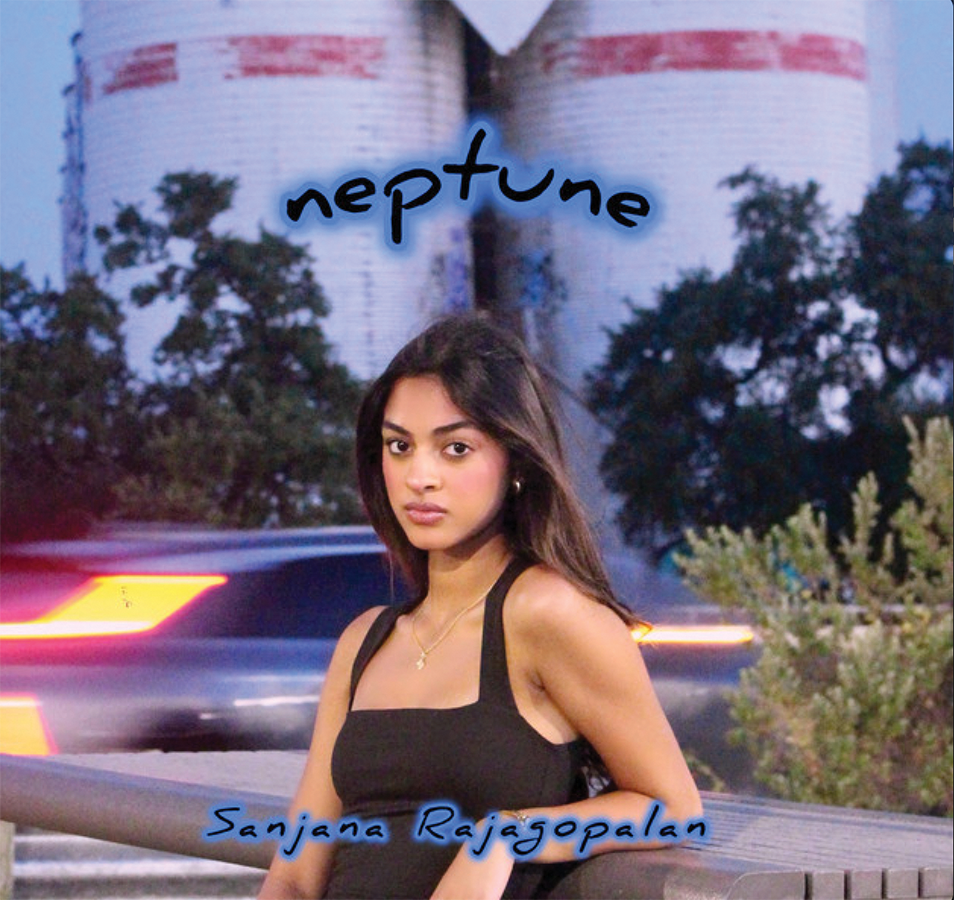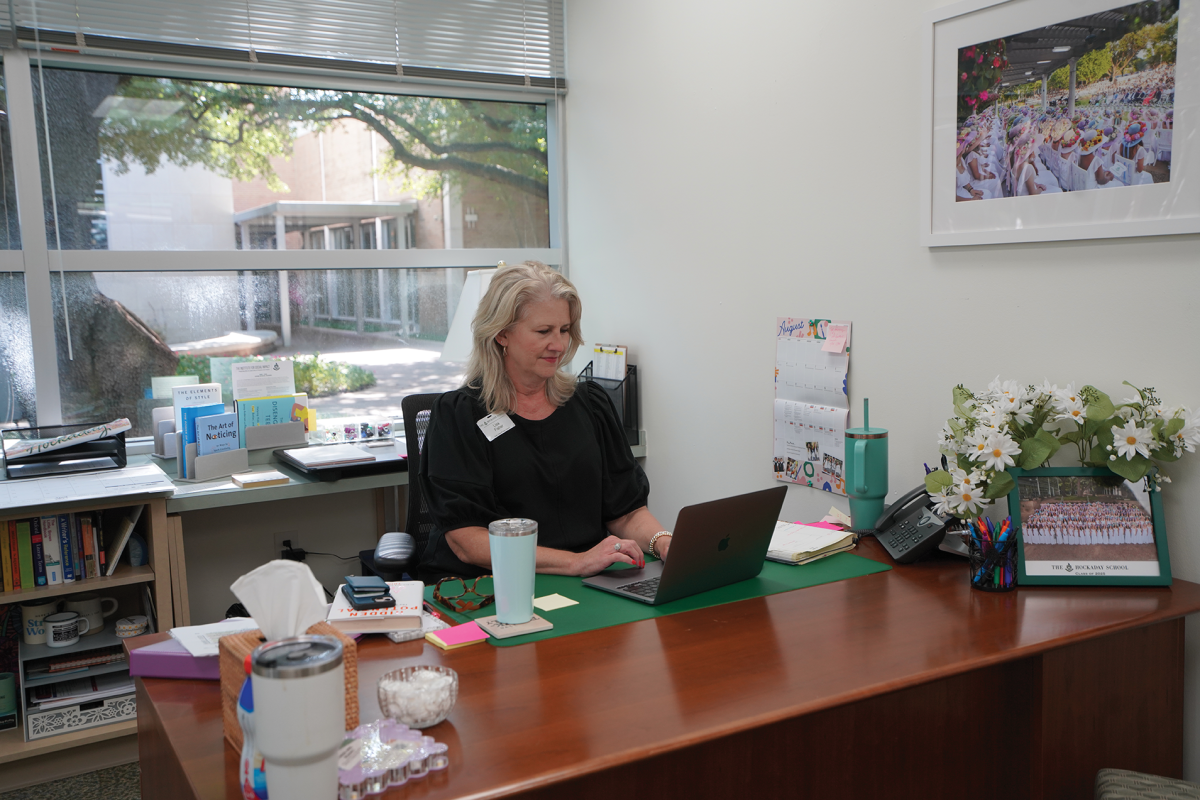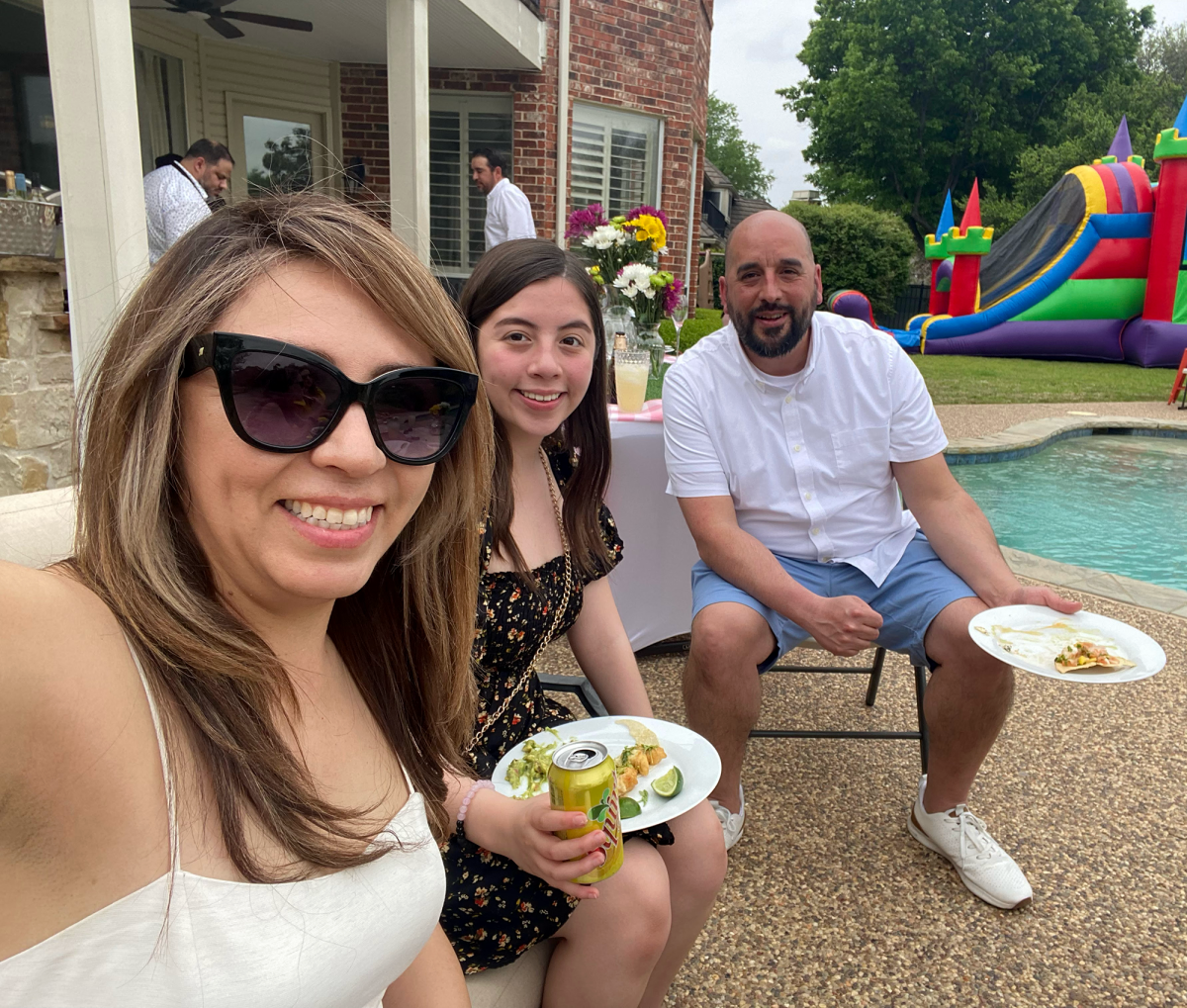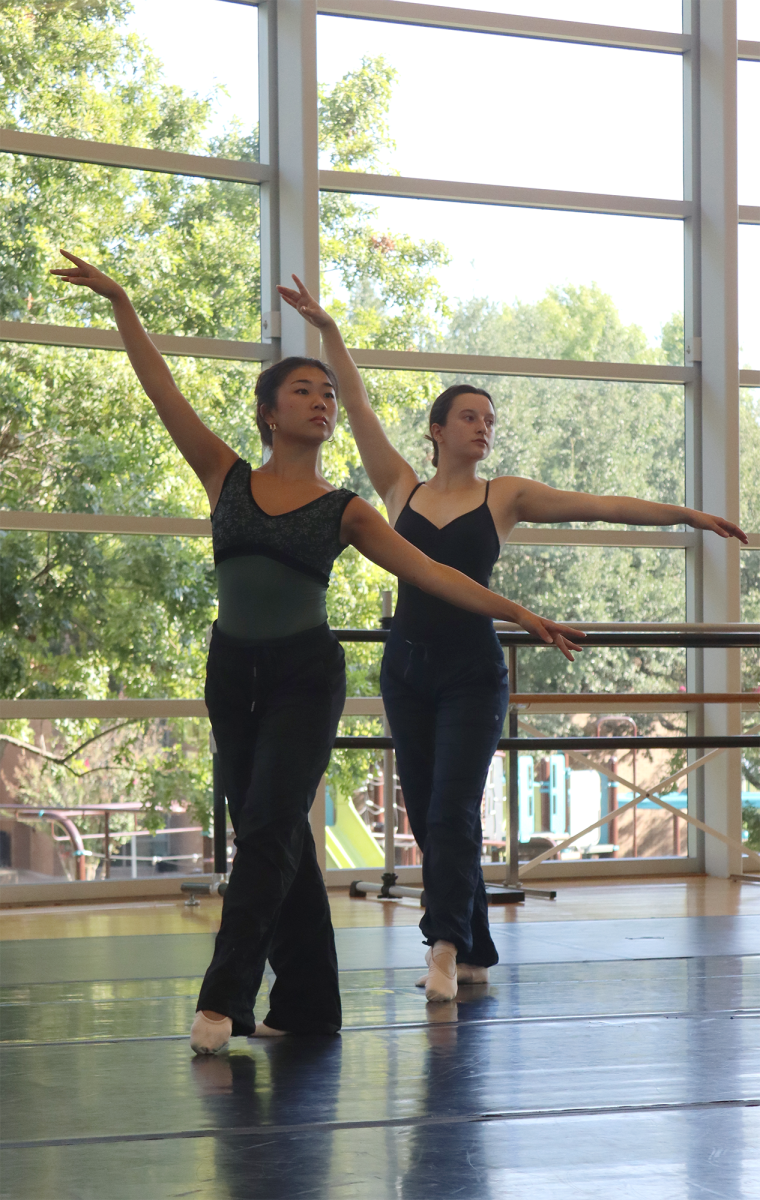On April 24 and 25, Hockaday Daisy Company, which comprises six freshman theater students, will perform an original rendition of “Cinderella” for the Lower School. However, their performance will be a far cry from the trite, traditional western fairy tale of this well-known princess; they will be performing four variations of the “Cinderella” story from around the globe, all in one play.
While brainstorming ideas for the Daisy Company’s spring production, Drama Teacher Emily Gray wanted to give the students an opportunity for performance that demonstrated their growth as actors over the course of the year. At the same time, Gray wished to reach out to other divisions of the school.
“In Upper School, we do lots of different things after school or in the musical, but we rarely share our talents and fruits of our labor with the Lower School,” Gray said. “I thought, as a community, we should share what we have and what we do.”
Gray decided that the Hockaday Lower School students would be a fitting audience for the Daisy Company’s next play. According to Gray, plays aimed at younger children are a niche that remains to be filled. In addition, many children’s plays that have already been published are too time consuming to prepare considering the class time available to the Daisy Company actors.
For these reasons, the Daisy Company decided to write their own play as a group, an unprecedented feat in the Hockaday Theater Department. In this way, the actors would be able to tailor their own play to fit their parameters. Gray, however, also had a deeper wish for the play.
“I want [the play] to be a very inclusive piece in terms of the main story. I don’t want it to be white-centric and be a sweet little story that doesn’t include a lot of people,” Gray said. “I thought, ‘How do we make sure that a diverse audience feels like the play is for everyone?’”
After researching, reading and improvising with various children’s stories and poems, the Daisy Company kept returning to the Cinderella story.
“Even though we liked the story, we didn’t think it something that was particularly interesting to regurgitate,” Gray said. “We did a bit of research on it, and it turns out that the Cinderella story is, in some way or other, present in almost every language and every culture in the world, going back hundreds of years. They’re not exactly the same, but they share similar features.”
After examining 14 different versions of “Cinderella” from the globe, the Daisy Company ultimately decided to include four variations of the story in their play.
The first variation depicts the Western story of “Cinderella,” originating from the German Grimm’s Fairy Tales. The second variation comes from Egypt, telling the story of a Greek slave girl with a talent for dancing who is bought and brought over to Egypt. The third variation originates from Zimbabwe. Lastly, the fourth variation is Polish, in which the Cinderella character is a boy from a Jewish family who meets a rabbi and falls in love with his daughter.
Preparing the Play
For freshman Lily Forbes, a member of the Daisy Company, the most enjoyable part about working on the play is the collaborative experience of writing the script together.
“My favorite part of being in it is the fact that we got to come up with the story,” Forbes said. “We each got the ability to research different cultures and their Cinderella stories, and then we got to mold it into one story.”
According to Forbes, creating the script is a fluid process. Most of the inspiration stems from improvisation sessions, in which the actors give an impromptu performance of a scene and then build it from there.
“We’ll devise what we think the scene should be,” Gray said. “Then we’ll all talk about it together and we’ll change a little bit and do it again and again.”
Likewise, casting the roles has been an entirely collaborative and smooth process in which the students divide the roles amongst themselves. Students who feel particularly drawn or interested in one role simply express their desire to play the character. As there are six members of the Daisy Company, each can have the opportunity to play a different role in all four variations.
“In the first one, which is classic Cinderella, I’m playing Cinderella. In the second one, the Egyptian version, I’m the equivalent of the stepsisters,” Forbes aid. “In the one from Zimbabwe, I’m the old wise woman who is like the fairy godmother. In the final story, I’m also a stepsister.”
Setting the Stage
Not only is the premise of the play a stand-out factor, but the stage direction itself will be unique creation. The four corners of the black box theater will represent the four countries with their respective stories. These four corners will be connected by pathways painted on the floor; some will resemble dusty gravel pathways, while others will be stone, grass or dirt. Finally, the pathways will meet in the middle of the room, which will be marked by a fountain.
“The whole black box is the stage, and the Lower School students will sit on the stage,” Gray said. “They will sit in chunks, and there are pathways between them where the actors can move between the groups of children.”
The action will thus take place in the four corners, though the actors will also come to the middle and travel between the sections.
“It’s immersive theater in that the audience is really in the middle of it,” Gray said. “It’s not like the actors are in one place and the audience is separated from them. They’re all part of the same space.”
However, crafting the immersive experience has proven to be a challenge.
“Since we are performing in a style where the kids sit on the stage, we need to make sure everyone can see everything that’s happening around them,” Forbes said.
Another engaging feature of the Daisy Company’s play is that hooks will be placed along the walls where actors, in full view of the audience, will take off one piece of their costume and put on a different piece to signify a change of character. Additionally, the actors will break character after each of the four stories to allow for a “wiggle break” for the Lower School students.
While the members of the Daisy Company have been working on designing blocking and organizing props for their performance, students from the Hockaday technical, set and costumes crew have also been an integral part of putting the play together.
Freshman Helena Magee is the lighting designer and light board operator for the Cinderella play. As such, she along with freshman Maisy Crow, have designed and hung dozens of fixtures, focusing on color and intensity to create depth and variation.
“We plan to continue experimenting with fixture placement and begin finalizing certain combinations of lights to emphasize specific areas and set pieces and to enhance the overall performance,” Magee said.
However, because Magee is not a member of the Daisy Company class, coordinating rehearsal times will prove difficult.
“It will be a challenge finding time to rehearse with the actors since our schedules do not match up,” Magee said.
Looking Ahead
Although the Daisy Company will perform the show in April, Gray does not envision this as the end of their journey with the Cinderella play.
“My goal is that at the end of this, once we’ve performed it, that we go back and really refine the script and actually do get it to where it’s a script that could be used by somebody else who hasn’t seen the show,” Gray said.
If the script is ready, Gray will consider submitting to young playwriting festivals to see if those companies would be interested in performing a stage reading of it. Several such festivals include the Humana Festival in St. Louis, which is a professional theater festival, as well as the professional Kitchen Dog Theater in Dallas, which holds an annual “Pup Fest” for teen playwrights.
“That could be done this year, that could be done next year,” Gray said. “That’ll be the hard thing once we finish the show, to revisit and clean up the script.”
And Gray believes that the experience of collaboratively writing a play as a company and working together to bring it to fruition has been a tremendously rewarding one, and she hopes to continue projects like this in the future.
“I’ve really enjoyed it as an entire process. It’s really great for the freshman class,” Gray said. “We spent the first semester learning some acting skills, and now they get to put that into a piece and share it with the Lower School.”
Elizabeth Guo – Copy Editor


